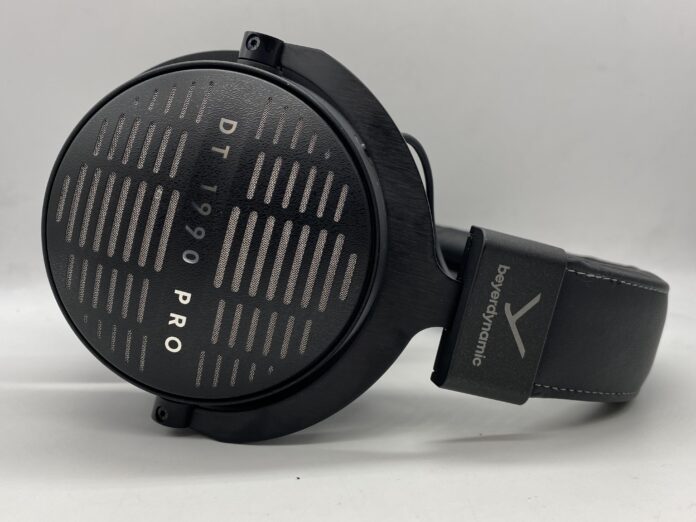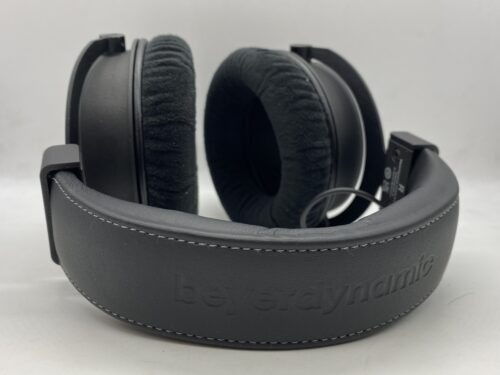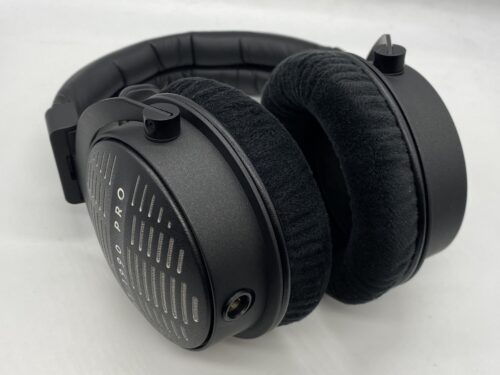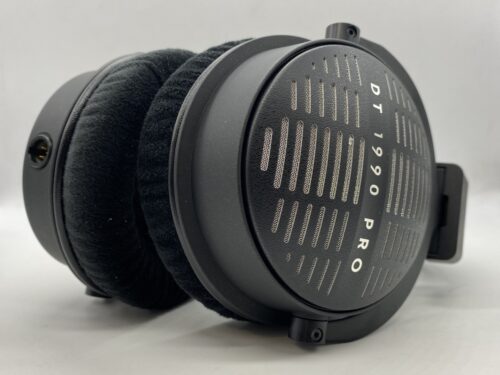The original DT 1990 Pro is a staple for mixers and studio professionals everywhere, so making a new version could be hard to top. It has had a long lifespan, but now Beyerdynamic is updating a lot of its current DT series with new iterations like the DT 770 Pro X. Can the DT 1990 MKII fill the shoes of the original?
What You Get
- DT 1990 PRO MKII Headphones
- Velour ear pads
- Leatherette ear pads
- 3.5mm to 6.35mm (1/4″) lockable stereo jack plug
- 3-pin XLR plug to 3.5mm 3m straight cable
- 3-pin XLR plug to 3.5mm 5m coiled cable
- High-quality hard case
- Beyerdynamic Warranty
Look & Feel
The DT 1990 MKII is mostly the same basic build as the last version. Its structure and padding retain the same materials, but the grille carries a different design. On the 1990 MKII, the grille has more slits, taking on a look closer to the DT 990 Pro. It has a bit more of a gloss to it, which makes it stand out as a more refined appearance. Then there’s the comfort quality, which also hasn’t changed much. I happen to like the secure pinch that the 1990 has, especially when paired with the comfortable velour pads that sit on your head firmly.
Design
For the new DT 1990 Pro MKII, Beyerdynamic implements its state-of-the-art TESLA.45 dynamic driver. This is their current generation 45mm driver that has been redesigned since the original DT 1990. It allows for low noise, improved impulse behavior, and signal fidelity at high volumes. This is perhaps the most controversial aspect of the 1990 MKII, in that this driver only has 30 Ohms of impedance. It’s much easier to drive than the last model, so you can use it with any kind of system no matter if it’s a high-end or budget device. As long as it has a 3.5mm or quarter-inch headphone plug, it can probably run the 1990 MKII.
Soundstage
There’s a very specific task that the 1990 MKII is meant for, and the soundstage will help determine how well it can complete that task. That task is to effectively reproduce stereo accuracy to surgically make decisions when mixing, or to critically listen to a mastered track as it is meant to be heard. Beyerdynamic’s studio headphones have never had a problem doing this, and the 1990 MKII feels like the perfect extension of that. This is shown in the precise spatial imaging and tactility it effortlessly displays.
The 1990 MKII presents a great open headspace that has strict positioning and exact panning movement. Both channels have incredible separation, giving each individual sound element a place where you can easily localize it. You can feel it wrap around you, but it stays away from appearing holographic so as to not distract you from its reliability. I would still consider the sound to be immersive without needing to operate in a bubble. The soundstage does a good enough job unfolding layers and replicating dimensions in the stereo field.
Low End
With a studio headphone like the 1990 MKII, you’ll get a dynamic bass response that is balanced and realistic. It’s like a form-fitting sound that will only provide impact and rumble when called upon. There’s nearly no added low-end resonance otherwise, as the bass is sectioned off accurately. It’s a realistic response that might lack some consistency, but when a track emphasizes the bass, the 1990 MKII can slam down quite hard. When the bass reaches its strongest presence it shows a deep vibration, supporting clear bass details with a solid foundation.
Mids
The midrange is certainly the meatiest portion of the sound signature, with the 1990 MKII offering vibrant details and clarity. You can expect a perfectly even response that distinguishes notes and gives them room to offer you a clear picture of the sound in a natural state. Its texture can sometimes come off as a bit cold or clinical, but the amount of transparency and weight it has more than justifies that. Everything has a definitive snap to it that gives the impression that a real person is playing those notes. Crisp piano recordings and plucked strings help highlight that with their full resolve. Vocals have a different kind of character to them like they’re more textured than the rest of the instruments that surround them. They sit forward and are much more lush, but still feel natural and uncompromised to the recording.
Highs
Beyerdynamic has a treble flavor that is easy to identify, and the 1990 MKII doesn’t do much to those who take issue with it. I never took issue with the high-frequency timbre of the original DT 1990, so what the MKII does doesn’t bother me as much. The MKII has a strong uptick in the treble, and while I don’t think it ever feels harsh you’ll definitely hear sibilance. It’s a very cutting timbre with a lot of edge, and it brings out good detail in the treble and upper highs. Sound elements have a distinctive decay which you can asses well with any track that has reverb. It communicates space well and expands the headspace with the necessary height.
Summary
While the 1990 MKII makes a few tweaks from the original, it retains the same studio-quality sound that it’s known for. The sound signature is as dynamic and precise as ever, with even more realism and transparency. Lowering the impedance to just 30 Ohms might not be a popular decision for some, but it leaves the 1990 MKII open for more home studio spaces that might not have the proper equipment to use them. Hopefully, this gets more people to experience this exceptional sound.

The Beyerdynamic DT 1990 Pro MKII is available at Audio46.
MAJORHIFI may receive commissions from retail offers.











